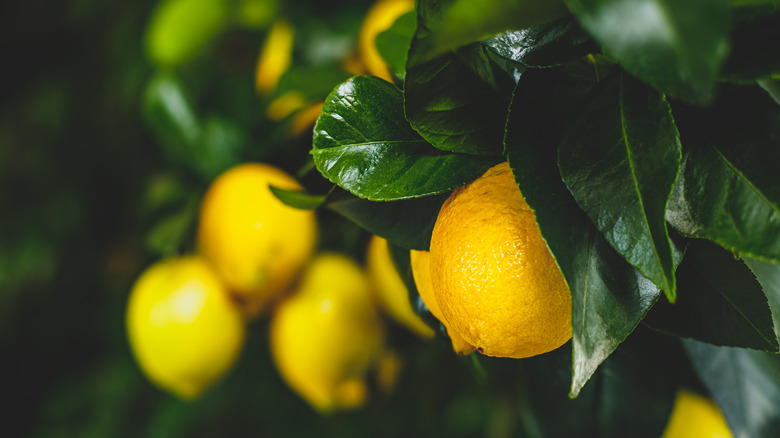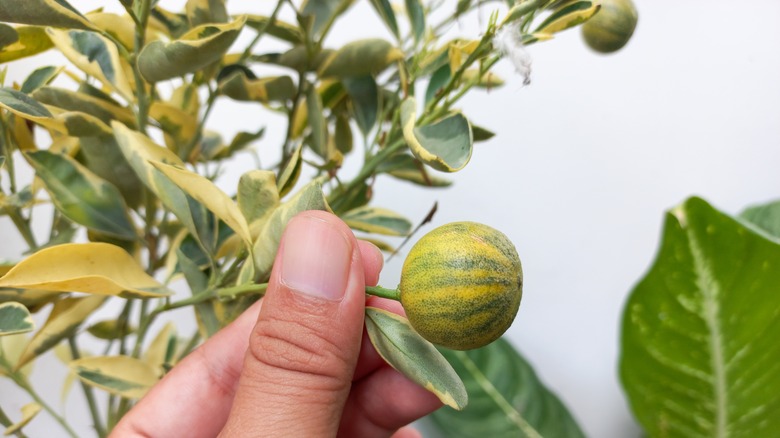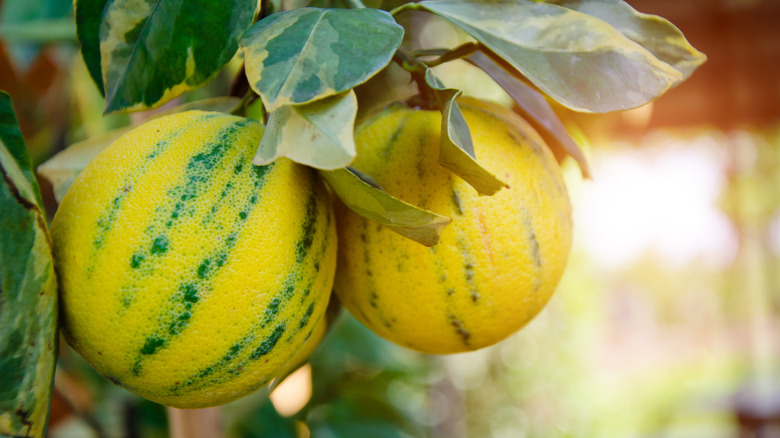The Beautiful Lemon Tree You Can Grow All Year Round With No Issue
Not only do lemon trees provide delicious fruit, they also boast fragrant flowers, and as long as you pick the right variety, they can bring beauty to your home, patio, or yard year round. While many lemon trees are too large to be practical for containers, if you stay on top of pruning dwarf or semi-dwarf trees, they can often make excellent houseplants that don't grow much past 5 feet. One of the best lemon trees for growing in containers on patios and in homes is the gorgeous pink variegated eureka lemon.
Pink variegated eureka lemons (Citrus x limon 'Variegated Pink') have many impressive traits, including their stunning striped green and white leaves and their rinds, which initially boast green and yellow coloring before maturing to a buttery yellow. It's not just their outer beauty that makes them winners, though; they also have delicious pink flesh and surprisingly few seeds or thorns. Even better, eureka lemons are prized for their ability to produce fruit almost year-round, meaning you'll seldom be without easy access to deliciously tart citrus. As long as you provide your tree with the right soil and light and keep it well-fed, you'll be able to enjoy lemons for years to come.
How to grow pink variegated eureka lemon trees
Eureka lemons are hardy only in USDA zones 8 through 11, but gardeners in colder regions don't have to miss out on the fun and can instead grow the citrus tree indoors. Make sure you opt for a tree grafted onto dwarf or semi-dwarf rootstock if you are planning to keep your lemon tree in a container, and plant your tree in a container that is at least 15 gallons. Use slightly acidic potting soil for your plant, and be sure it drains well, as citrus can be prone to root rot. If necessary, mix in succulent or cactus potting mix to ensure the growing medium doesn't hold onto too much water.
Citrus trees appreciate full sun, so if your variegated eureka lemon tree needs to spend more than a few months indoors, be sure it is in a location where it gets plenty of light. Your lemon tree will also need a fair amount of nitrogen-heavy fertilizer to keep it healthy and encourage good leaf growth. Because citrus trees are such heavy feeders, you may want to regularly test your tree's growing medium just as you would check the health of your garden soil.
Additional considerations when growing pink variegated eureka lemons indoors
If you've noticed flowers on your indoor lemon tree but haven't gotten any fruit, it could be because the flowers aren't being pollinated. While insects generally take care of pollination for outdoor citrus, you may need to provide your indoor plant with a bit of help. Luckily, the trees are self-fertile, so simply shaking the flowers should be enough to pollinate them.
As well as your plant may perform indoors, it's still an excellent idea to allow your pink variegated eureka lemon tree to spend time outside when the weather allows. When outdoor temperatures are consistently 65 degrees Fahrenheit or higher, you can begin taking your tree out for short periods of time to help it acclimate to the more direct sunlight and wind. This is similar to the process you should follow to harden off young plants. Remember to do the same process in reverse at the end of summer, acclimating the tree slowly to lower light conditions inside your home.
Don't forget to check your tree for pest infestations at the end of summer before bringing it back inside. As unpleasant as it can be to deal with common citrus pests outdoors, like whiteflies or spider mites, it's much worse inside.


